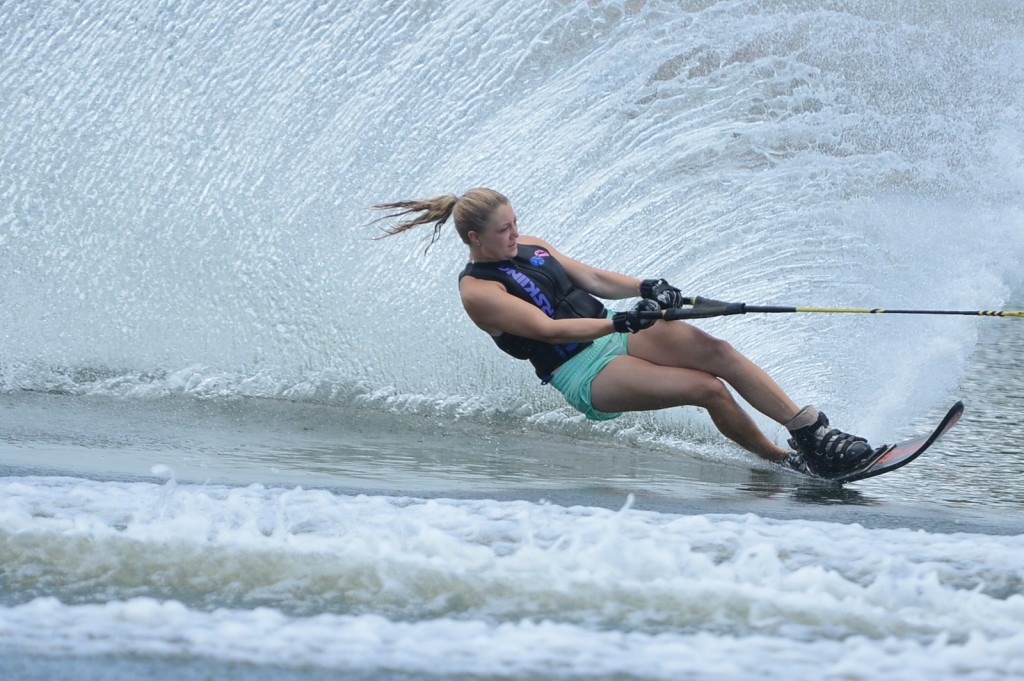Waterskiing with T1D

Ellie Whitlock is about to begin her junior year at the University of Alabama. Along with managing her type 1 diabetes (T1D) and college coursework, Ellie competes on the university’s club water skiing team.
JDRF intern Olivia Louderman chatted with Ellie about waterskiing, college and life with T1D.
When were you diagnosed with T1D?
I was diagnosed in 2010, the summer before my freshman year of high school. There were many changes happening at that point in my life. I was starting a new school and also having to handle my newly diagnosed T1D. It became easier after a couple of weeks, and I started using a pump a few months after my diagnosis. Thankfully, my parents were super involved. My dad helped me change my pump site, while my mom would make meals and help with carb counting.
What was the transition to college like?
I had to learn how to do it all myself: making all of my meals, changing my pump site and monitoring my blood sugar. Before officially starting my freshman year at the University of Alabama, my mother helped me educate my friends and roommates about my T1D. At first, I didn’t realize how important it was to make others aware of it. After helping someone else with T1D during my sophomore year, I quickly learned that I should educate those around me, especially my water ski team, about handling and managing T1D.
When did you start waterskiing?
My dad grew up around a lake, so he first taught me how to waterski when I was six years old. My dad got really involved and found some instructional waterskiing videos that he used to help teach my siblings and me. Then, we heard about a beautiful water ski resort in Acapulco, Mexico, called Ski Paradise, where I was introduced to the slalom course which requires the skier to ski around six buoys. The owner of Ski Paradise was able to get me in touch with people in Virginia who could help me become an even better water skier.
What is it like managing classes, T1D and competing all at once? How much time do you spend waterskiing?
In the fall, when the weather is nice, I try to go out to the lake almost everyday. It definitely depends on what I have going on in my classes. It’s not too difficult to manage my diabetes when skiing because waterskiing doesn’t involve long amounts of cardio. It’s a high-intensity sport for short periods of time so my blood sugar level isn’t that affected. It is only really affected right before I compete, because I get nervous. My pump is waterproof, so I can keep it on when I ski but because I’m wearing a swimsuit, my pump is usually pretty exposed. At tournaments, I often get asked what it is. Surprisingly, I have never met another waterskier who lives with T1D.
When did you start getting involved with JDRF?
JDRF reached out to me when I was first diagnosed, and my family has been involved since. My dad’s company, Whitlock, sponsors a JDRF One Walk team, and my family and I walk every year. For my senior project in high school, I spent two weeks at the JDRF Central Virginia Chapter chapter and in Washington, D.C., researching all that JDRF does.
Ellie is excited to get more involved with JDRF while in college, and is even hoping that her waterski team will find a way to help out. JDRF is thankful for the time Ellie, her family and Whitlock spend raising money for research to help minimize the burden of T1D.
